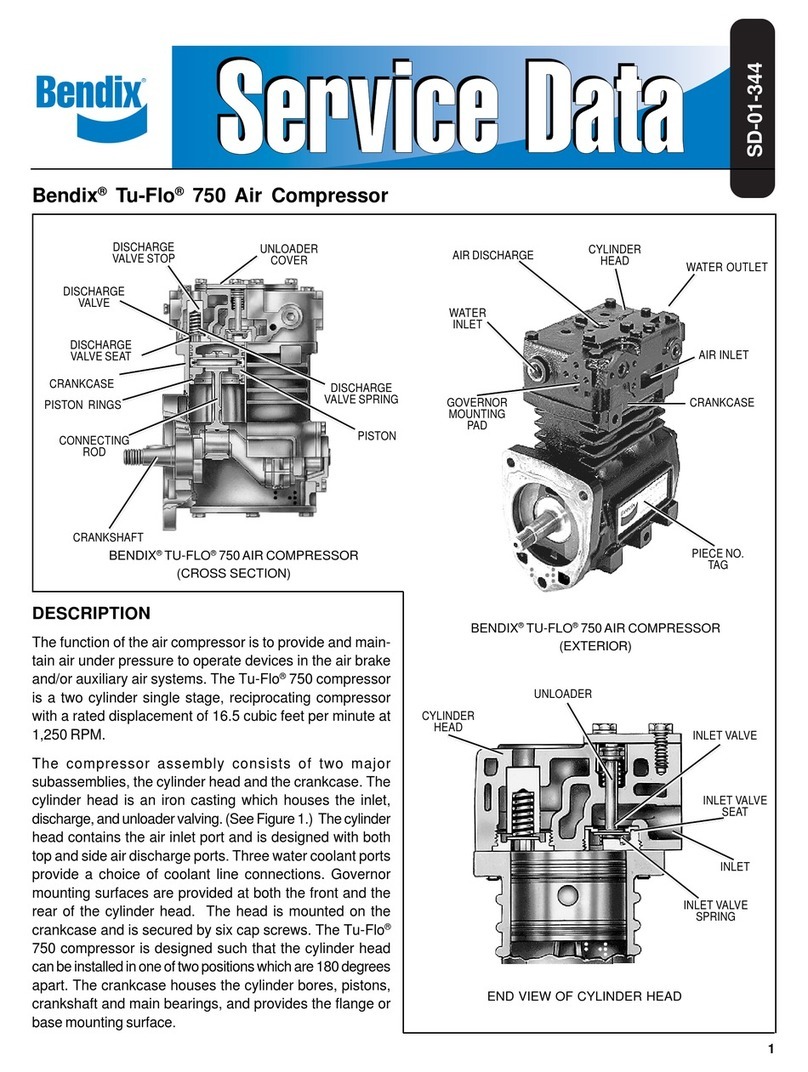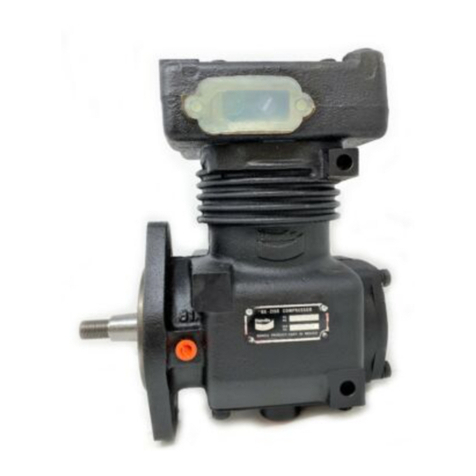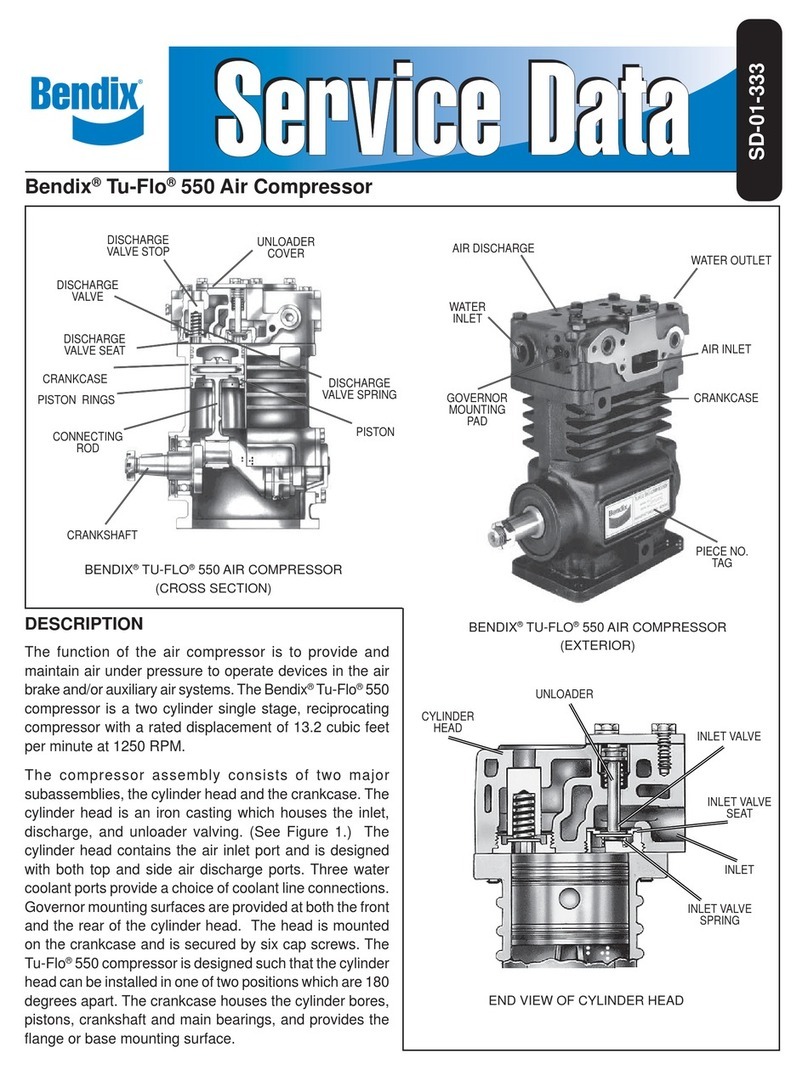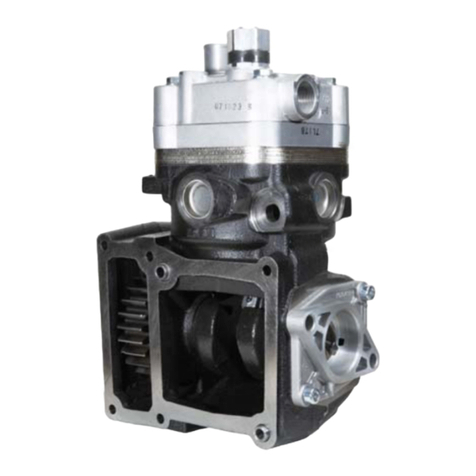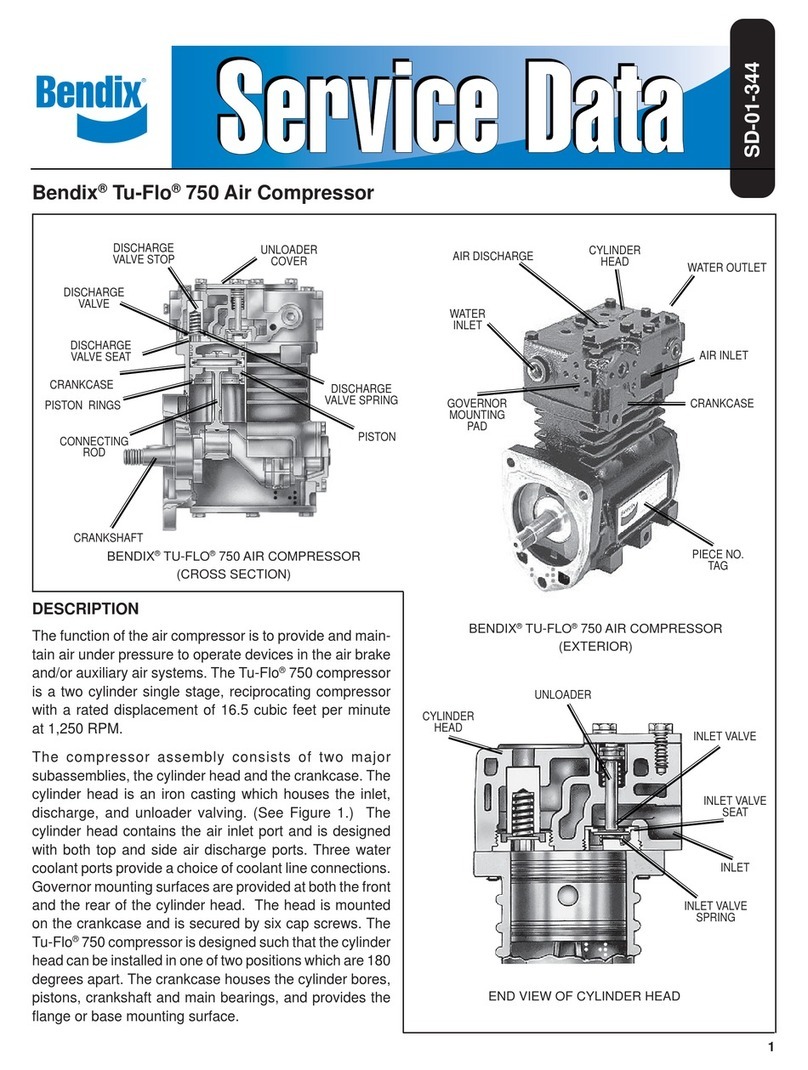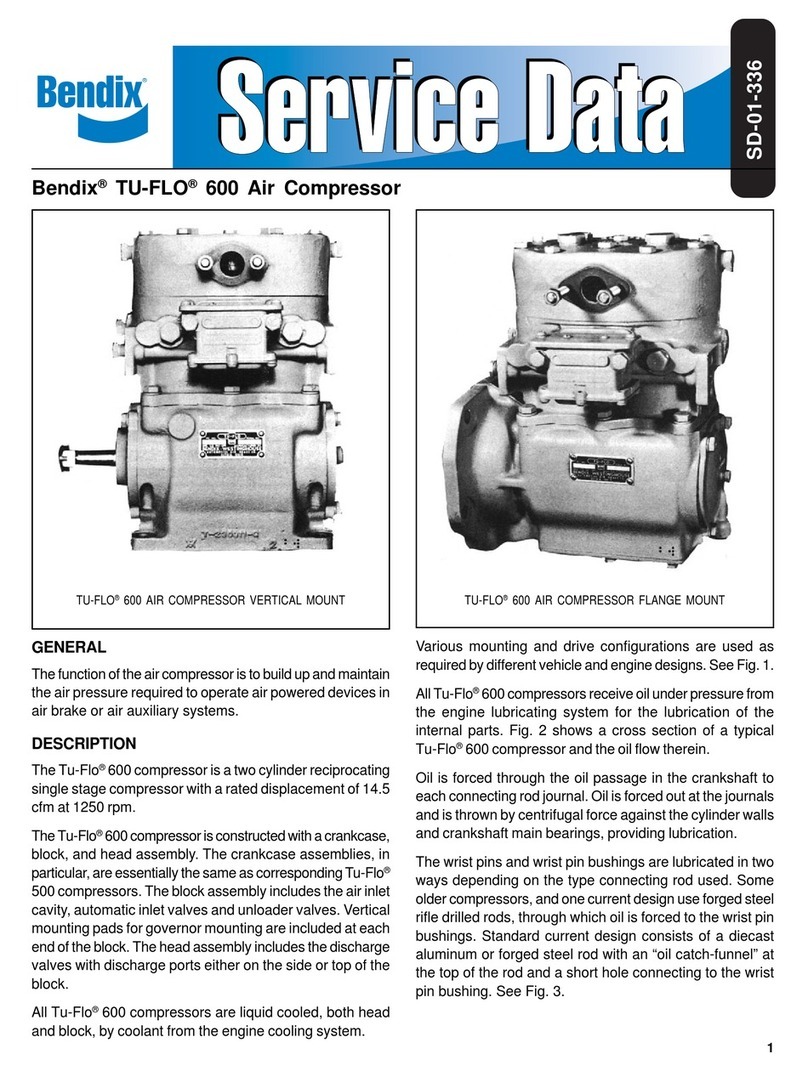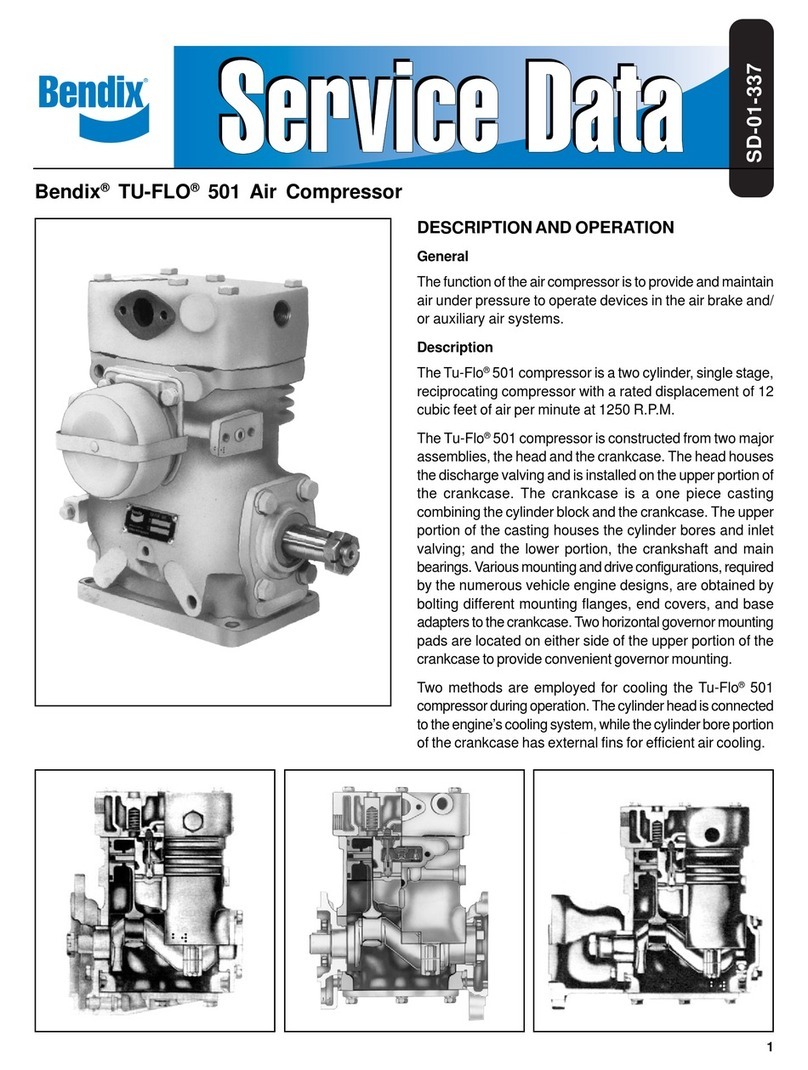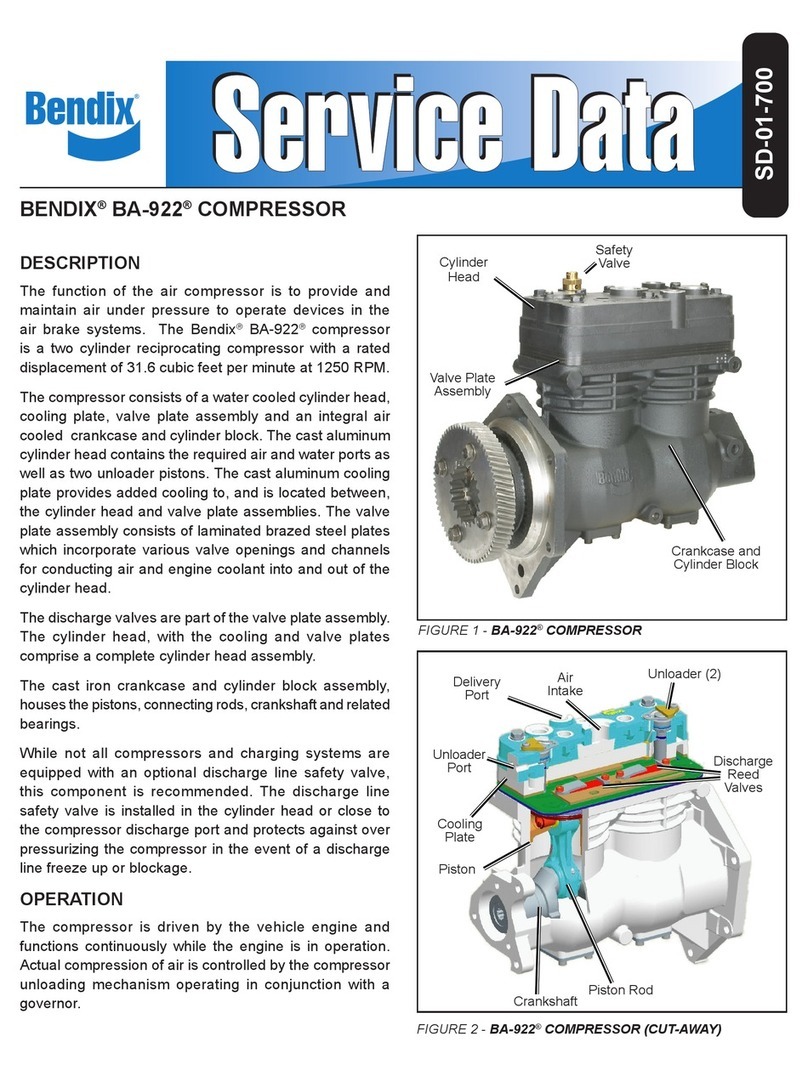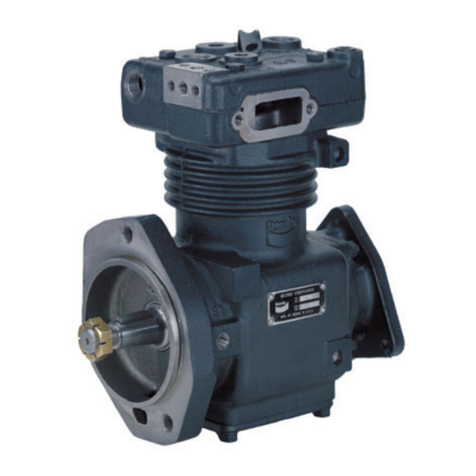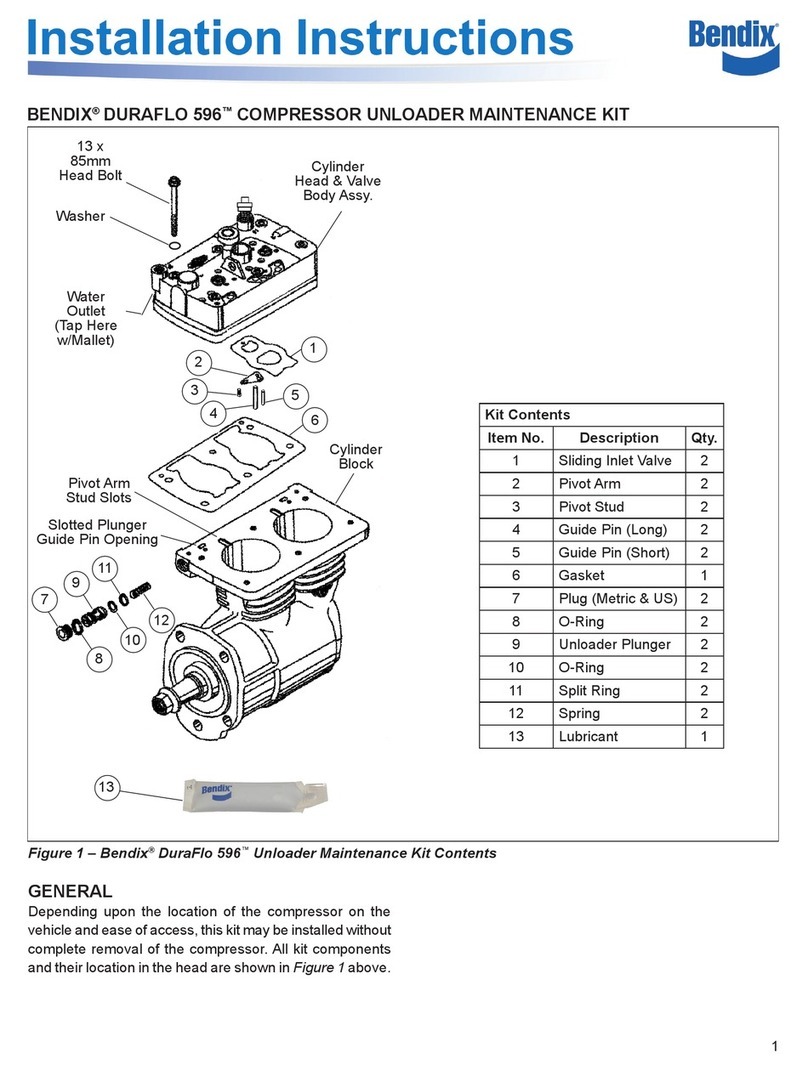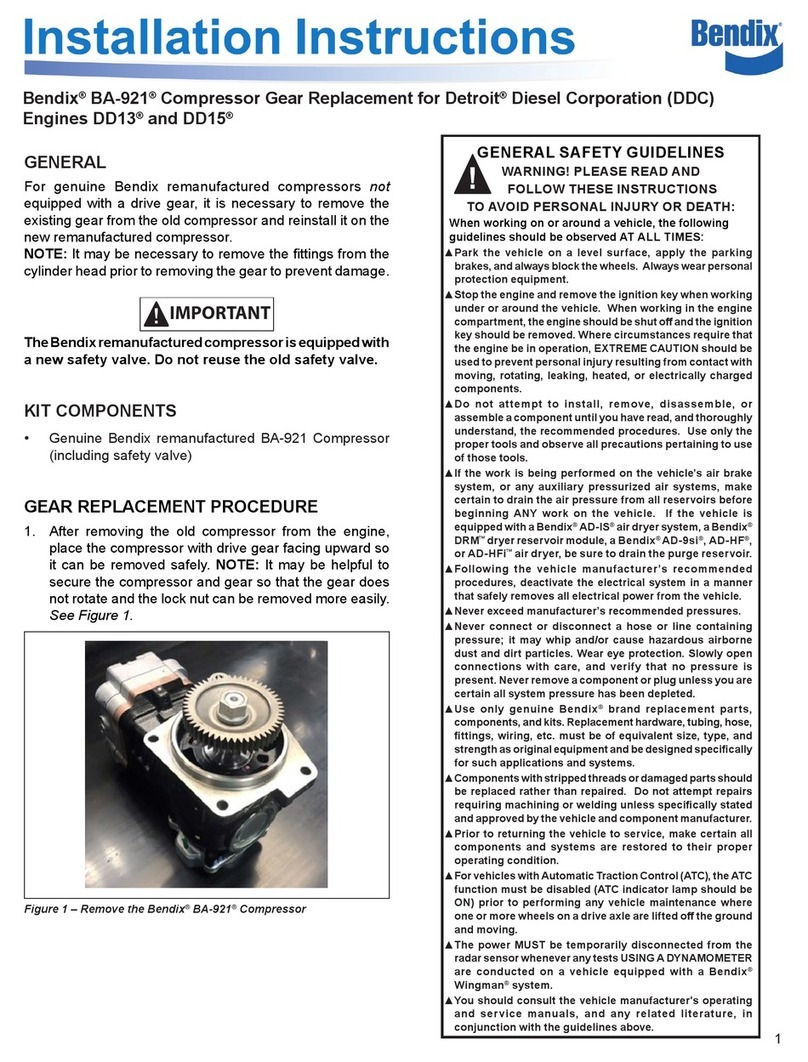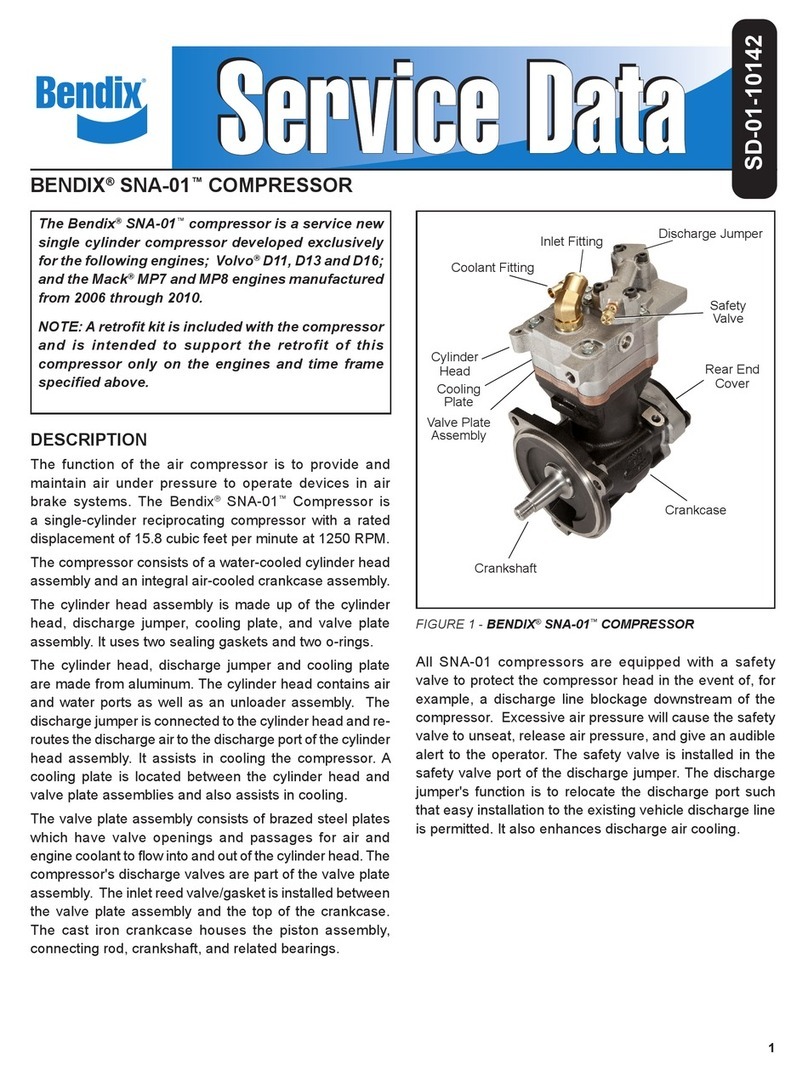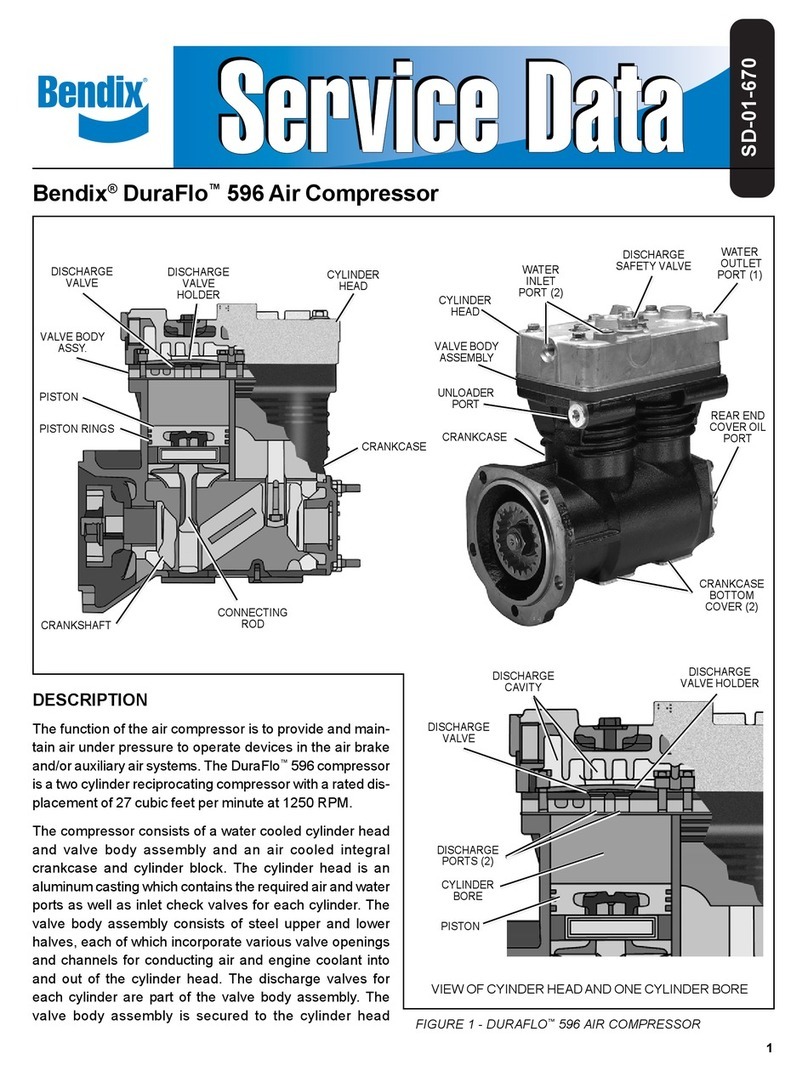
4
Asthe pistonreaches the top of itsstroke andstarts down,
thedischargevalve springreturnsthe dischargevalveto its
seat. This prevents the compressed air in the discharge
line from returning to the cylinder bore as the intake and
compression cycle is repeated.
NON-COMPRESSION(Unloaded)
When the air pressure in the reservoir reaches the high
pressuresettingofthegovernor,thegovernoropens,allowing
airto passfrom the reservoirthrough thegovernor andinto
the cavity beneath the unloader pistons. This lifts the
unloaderpistons andplungers. Theplungers moveupand
hold the inlet valves off their seats (Fig. 11).
With the inlet valves held off their seats by the unloader
pistons and plungers, air is merely pumped back and forth
between the two cylinders. When air is used from the
reservoirandthe pressure dropstothe low pressuresetting
of the governor, the governor closes, and in doing so,
exhausts the air from beneath the unloader pistons. The
unloader saddle spring forces the saddle, pistons and
plungers down and the inlet valves return to their seats.
Compressionis thenresumed.
COMPRESSOR & THE AIR BRAKE SYSTEM
GENERAL
The compressor is part of the total air brake system, more
specifically,the chargingportionof theairbrake system.As
acomponent inthe overallsystem its condition,duty cycle,
proper installation and operation will directly affect other
components in the system.
Powered by the vehicle engine, the air compressor builds
theairpressurefortheairbrakesystem.Theair compressor
istypically cooledby theengine coolantsystem, lubricated
by the engine oil supply and has its inlet connected to the
engine induction system.
As the atmospheric air is compressed, all the water vapor
originally in the air is carried along into the air system, as
well as a small amount of the lubricating oil as vapor. If an
air dryer is not used to remove these contaminants prior to
enteringtheairsystem,themajority,butnotall,willcondense
in the reservoirs. The quantity of contaminants that reach
the air system depends on several factors including
installation,maintenanceandcontaminanthandlingdevices
inthesystem.Thesecontaminantsmusteitherbeeliminated
prior to entering the air system or after they enter.
DUTYCYCLE
The duty cycle is the ratio of time the compressor spends
buildingairtothe totalengine running time.Aircompressors
are designed to build air (run "loaded") up to 25% of the
time. Higher duty cycles cause conditions that affect air
brake charging system performance which may require
additional maintenance. Factors that add to the duty cycle
are: air suspension, additional air accessories, use of an
undersizedcompressor,frequentstops, excessiveleakage
from fittings, connections, lines, chambers or valves, etc.
RefertoTableAintheTroubleshootingsectionfor a guideto
variousdutycyclesandtheconsiderationthatmustbe given
tomaintenance ofother components.
COMPRESSORINSTALLATION
While the original compressor installation is usually
completed by the vehicle manufacturer, conditions of
operation and maintenance may require additional
consideration.The following presentsbase guidelines.
DISCHARGELINE
Thedischarge line allowsthe air,water-vapor andoil-vapor
mixture to cool between the compressor and air dryer or
reservoir.The typical sizeof a vehicle'sdischarge line, (see
column2ofTableAintheTroubleshootingsection)assumes
a compressor with a normal (less than 25%) duty cycle,
operating in a temperate climate. See Bendix and/or other
airdryer manufacturer guidelinesas needed.
The discharge line must maintain a constant slope down
fromthe compressorto theair dryerinlet fittingor reservoir
toavoidlowpointswhereicemay formandblocktheflow. If,
instead, ice blockages occur at the air dryer or reservoir
inlet,insulation may beadded here,or if theinlet fittingis a
typical 90 degree fitting, it may be changed to a straight or
45degreefitting.Shorterdischargeline lengths orinsulation
may be required in cold climates.
While not all compressors and charging systems are
equippedwith adischargeline safetyvalvethis component
isrecommended.Thedischargelinesafetyvalve is installed
in the cylinder head or close to the compressor discharge
portand protects againstover pressurizing thecompressor
inthe eventof adischarge line freezeup.
DISCHARGELINE TEMPERATURE
When the temperature of the compressed air that enters
the air dryer is within the normal range, the air dryer can
removemost ofthe chargingsystem oil. If the temperature
ofthe compressed air is abovethe normalrange, oil as oil-
vapor is able to pass through the air dryer and into the air
system. Larger diameter discharge lines and/or longer
dischargeline lengthscan helpreduce thetemperature.
FIGURE 11
DISCHARGE
VALVE
PISTON
STROKE
TO GOVERNOR
INTAKE
STRAINER
UNLOADER
PLUNGER
INLETVALVE
TO RESERVOIR
UNLOADING
